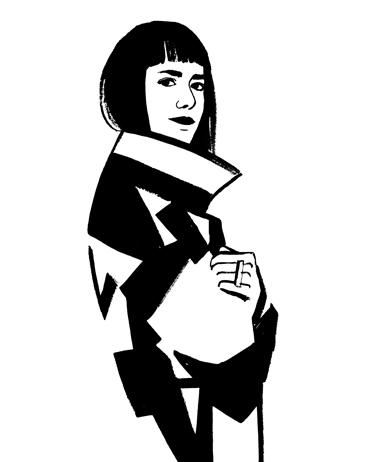
I met Alexandra Zsigmond seven years ago, when she had just started as the art director for the Letters section of the New York Times Opinion page. The job was straightforward enough: assign art for a box 1.8 inches wide by 2.55 inches high, to be run in black and white, seven days a week, on topics like education, health care, politics and gun-control—often with less than 24-hours notice. Many might find it difficult to be ambitious under such constraints; it was, after all, only a tiny corner of the paper. And yet, week after week Alexandra filled that space with the kind of generous, incisive and memorable work that is the reason she is being honored by the Society.
When that 1.8-inch box became too confining, she created entirely new venues for illustration at the Times, and invited a world of artists into them. When the visual metaphors on education, health care, politics and gun-control were getting tired, she looked abroad to find fresh eyes, to discover how other people might perceive and represent those subjects. When the illustration world felt too narrow, she commissioned video artists, comics artists, painters, sculptors, zine kids and coders. By the time she was done, she had found new ways to not only talk about education and health care, but also about things like anxiety and death and love.
It is not particularly easy to convince a Times editor to run a drawing of a snake-man in a pink robe, kneeling by candlelight, cradling a baby (see David Jien’s piece: “Anxiety: My Monster Self.”) But Alexandra was able to teach her editor to see with her. And in the meantime, she has taught us as viewers as well. We too have developed an eye for snake-men in pink robes—for illustration that brooks abstraction and accommodates mystery, that dignifies our intelligence and engages our emotions. As the illustrator and art director Brian Rea, put it, “we’ve learned how to see with her.” “Her work,” he said, “has helped make our industry feel fresh again.”
It is a humbling standard. Ping Zhu, an illustrator and one of Alexandra’s frequent collaborators, told me that working with her was “never a short process,” but that her notes “added nuance and poignancy to each solution, ones I wouldn’t have found on my own. She’s elevated the idea of what sorts of images we expect to see out in the world, which has made it our responsibility to maintain a high bar.“
The bar is one Alexandra has set for herself as well. As a curator, thinker and an artist in her own right, she has spent her adult life considering questions of metaphor and symbol, of iconography and its history. In the years since that first 1.8-inch assignment, I think it is possible to say that in even this short time, she herself has made a contribution to that history. Because, by any account, illustration does not look quite the way it did before Alexandra was around.
Alicia DeSantis
Deputy Editor and Creative Director, Culture
The New York Times
Portrait: Lauren Tamaki
